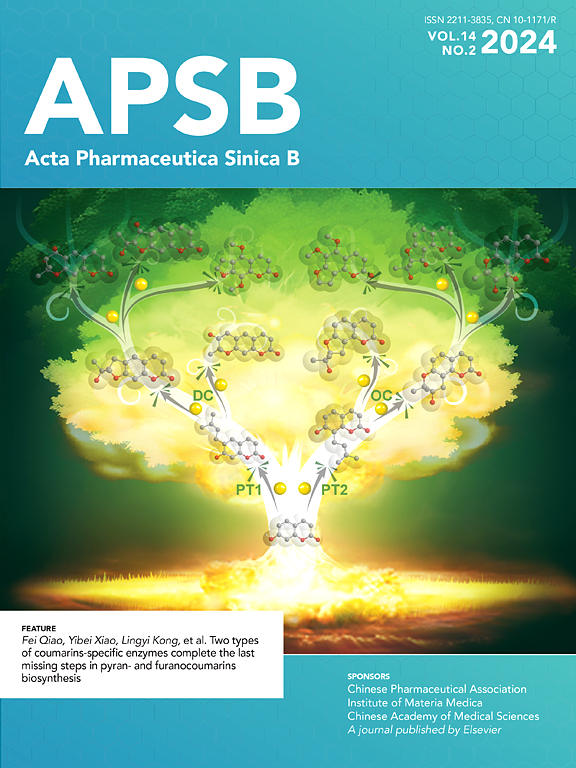Discovery of a novel AhR–CYP1A1 axis activator for mitigating inflammatory diseases using an in situ functional imaging assay
IF 14.7
1区 医学
Q1 PHARMACOLOGY & PHARMACY
引用次数: 0
Abstract
The aryl hydrocarbon receptor (AhR) plays a crucial role in regulating many physiological processes. Activating the AhR–CYP1A1 axis has emerged as a novel therapeutic strategy against various inflammatory diseases. Here, a practical in situ cell-based fluorometric assay was constructed to screen AhR-CYP1A1 axis modulators, via functional sensing of CYP1A1 activities in live cells. Firstly, a cell-permeable, isoform-specific enzyme-activable fluorogenic substrate for CYP1A1 was rationally constructed for in-situ visualizing the dynamic changes of CYP1A1 function in living systems, which was subsequently used for discovering the efficacious modulators of the AhR–CYP1A1 axis. Following screening of a compound library, LAC-7 was identified as an efficacious activator of the AhR–CYP1A1 axis, which dose-dependently up-regulated the expression levels of both CYP1A1 and AhR in multiple cell lines. LAC-7 also suppressed macrophage M1 polarization and reduced the levels of inflammatory factors in LPS-induced bone marrow-derived macrophages. Animal tests showed that LAC-7 could significantly mitigate DSS-induced ulcerative colitis and LPS-induced acute lung injury in mice, and markedly reduced the levels of multiple inflammatory factors. Collectively, an optimized fluorometric cell-based assay was devised for in situ functional imaging of CYP1A1 activities in living systems, which strongly facilitated the discovery of efficacious modulators of the AhR–CYP1A1 axis as novel anti-inflammatory agents.

求助全文
约1分钟内获得全文
求助全文
来源期刊

Acta Pharmaceutica Sinica. B
Pharmacology, Toxicology and Pharmaceutics-General Pharmacology, Toxicology and Pharmaceutics
CiteScore
22.40
自引率
5.50%
发文量
1051
审稿时长
19 weeks
期刊介绍:
The Journal of the Institute of Materia Medica, Chinese Academy of Medical Sciences, and the Chinese Pharmaceutical Association oversees the peer review process for Acta Pharmaceutica Sinica. B (APSB).
Published monthly in English, APSB is dedicated to disseminating significant original research articles, rapid communications, and high-quality reviews that highlight recent advances across various pharmaceutical sciences domains. These encompass pharmacology, pharmaceutics, medicinal chemistry, natural products, pharmacognosy, pharmaceutical analysis, and pharmacokinetics.
A part of the Acta Pharmaceutica Sinica series, established in 1953 and indexed in prominent databases like Chemical Abstracts, Index Medicus, SciFinder Scholar, Biological Abstracts, International Pharmaceutical Abstracts, Cambridge Scientific Abstracts, and Current Bibliography on Science and Technology, APSB is sponsored by the Institute of Materia Medica, Chinese Academy of Medical Sciences, and the Chinese Pharmaceutical Association. Its production and hosting are facilitated by Elsevier B.V. This collaborative effort ensures APSB's commitment to delivering valuable contributions to the pharmaceutical sciences community.
 求助内容:
求助内容: 应助结果提醒方式:
应助结果提醒方式:


